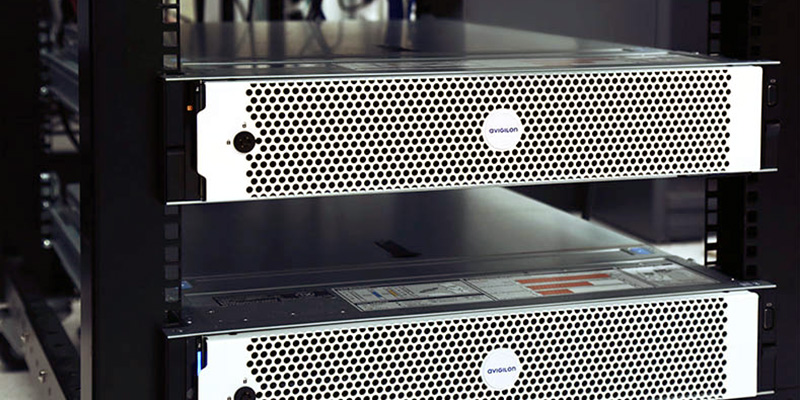
Comparing Cloud-Based, On-Premise, and Hybrid Video Surveillance Systems
A video surveillance system requires more than just security cameras. It also includes a place to store video footage and a connection that links the cameras to the video recorder. Traditionally, video data was stored on hard drives, usually on the same premises as the cameras. But with cloud technology and security as a service (SECaas) becoming more prevalent, on-premise systems are no longer the only reliable solution. So, is on-premise, cloud-based, or a hybrid of the two the best system for your organization or business?
When it comes to choosing the right system for your facility, the decision can be overwhelming. It depends on several factors, such as cost, what it takes to install and maintain, and how you need to access data during a critical security event. This article serves as a beginner’s guide to educate and help you choose between a cloud, on-premise, or hybrid video surveillance system that aligns with your organization’s unique security needs.

Cloud-Based Video Surveillance Systems
What is a cloud-based video surveillance system?
A cloud-based video surveillance system typically consists of security cameras connected to the internet, which transmit video feeds to cloud-based servers for storage and processing. This allows users to view and manage video footage from anywhere with an internet connection.
These systems are ideal for organizations with limited IT resources as they require minimal hardware and software maintenance. Additionally, cloud-based systems can scale easily and can be easily integrated with other security systems such as access control and building automation. With cloud storage, the upfront costs are lower than on-premise systems, but require a monthly subscription cost to store the data in the cloud.
Pros:
- No on-premise video storage and processing hardware means there is no up-front capital investment and installation is easier
- Flexible and scalable, simply purchase more storage as needed
- Video footage can be accessed from anywhere on a device with an internet connection, allowing for remote video monitoring
- No servers or additional infrastructure means you save on physical space
Cons:
- Dependence on internet connection can result in latency or downtime
- May require additional bandwidth and storage costs
- Limited control over data security and privacy
- Subscription-based pricing can become costly in the long run
Ideal for organizations that:
- Don’t have an IT team or have limited IT resources
- Don’t have additional space for server hardware
- Need to access video footage remotely
- Prefer a subscription payment model vs. capital investment
Applications for cloud-based systems:
Small school districts, places of worship, office spaces, multi-family housing complexes

On-Premise Video Surveillance Systems
What is an on-premise video surveillance system?
On-premise video surveillance systems are installed and managed on-site, offering the most control over security and data privacy. With an on-premise system, the video feeds from cameras are processed and stored on hardware located within the user’s building or property, rather than in the cloud. An on-premise video surveillance system typically consists of cameras, a video management system (VMS), and a storage system. The cameras capture video feeds, which are then processed by the VMS software, which allows the user to view, manage, and control the cameras on a device connected to the network. The storage system stores the video data, typically on server hard drives or network video recorder (NVR) devices.
On-premise systems offer greater control and privacy over cloud-based systems, as the video footage and data are stored on the user’s own hardware. They may be more suitable for large businesses or organizations that likely have a high volume of cameras, causing limited internet bandwidth. They do not rely on an internet connection for processing or storage. The downside is that on-premise systems can require a significant upfront investment in hardware and installation, as well as ongoing maintenance and software upgrades. They may also be more difficult to access and manage remotely.
These systems are ideal for large enterprises with high-security requirements or regulatory compliance, such as government agencies and hospitals, as they provide a secure and reliable solution. In addition, on-premise systems can be integrated with existing IT infrastructure, allowing for better data management.
Pros:
- Complete control over security and data privacy
- Reliable and secure solution
- Can be integrated with existing IT infrastructure
- No recurring subscription costs
Cons:
- High upfront costs for hardware and maintenance
- Requires ongoing maintenance and upgrades
- Finite storage capacity means having to purchase additional server storage or reduce the amount of time video footage is stored
Ideal for organizations that:
- Have experienced IT teams and resources
- Need complete control over the data
- Have strict compliance requirements and data privacy concerns
Applications for on-premise systems:
Government agencies, hospitals and healthcare buildings, financial institutions, large corporations, manufacturing plants, large school districts, higher education

Hybrid Video Surveillance Systems
What is a hybrid video surveillance system?
A hybrid video surveillance system is a combination of cloud-based and on-premise video surveillance systems. With a hybrid system, the cameras are connected to a local network, and the video feeds are processed and stored on hardware located on the premises of the user, either on the camera or video storage appliance. Some or all of the data may also be backed up and stored in the cloud.
With a hybrid system, you get the best of on-prem and cloud-based video surveillance. You get the control and privacy from on-premise solutions along with the benefit of remote access and management capabilities that come with cloud-based systems. Another benefit is flexibility, allowing the user to choose which video footage is stored locally and which is stored in the cloud. This is especially useful for businesses or organizations that need to comply with data privacy regulations or that have limited internet connectivity or bandwidth. Because the data is stored in two places, hybrid systems can also offer a more robust backup and redundancy solution, reducing the risk of data loss.
One drawback to the hybrid system is cost efficiency. They can be more complex to set up and maintain, as they require both on-premise hardware combined with cloud-based subscription fees. These systems are ideal for organizations with multiple locations, as they allow for centralized management and remote access.
Pros:
- Centralized management and remote access
- Increased scalability and flexibility
- Improved data management
- Combination of cloud-based and on-premise benefits
Cons:
- Higher upfront costs than cloud-based systems
- Requires ongoing maintenance and upgrades
- Potential for latency or downtime with cloud-based components
Ideal for organizations that:
- Require communication between headquarters and satellite offices
- Need remote access and management
Applications for hybrid systems:
Healthcare facilities, large corporations, education institutions, retail, military
Conclusion
Choosing a cloud vs. on-premise video surveillance system requires careful consideration of your organization’s security requirements and budget. Cloud-based systems offer flexibility and scalability, on-premise systems provide complete control and data privacy, and hybrid systems offer a combination of both. By understanding the pros and cons of each system, you can make an informed decision that best fits your organization.
